[…] and internet < sticky Get flash to fully experience Pearltrees 3 Reasons Why Linear E-Learning May Be the Best Solution It would be cool if every course we build was highly interactive with decision-making branches. […]
3 Reasons Why Linear E-Learning May Be the Best Solution
September 18th, 2012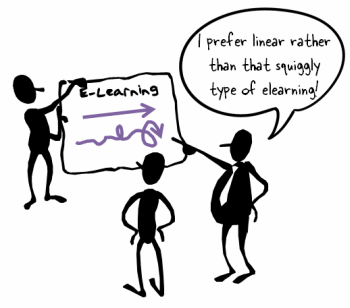
It would be cool if every course we build was highly interactive with decision-making branches. But the reality is that not all elearning courses need to be that way.
Despite the complaints we hear about linear, click-and-read courses, there are plenty of times when linear is the best solution. This isn’t a defense of bad elearning (that often is linear). Instead it’s an acknowledgement that there’s a place for linear content.
Instead of injecting our personal views on what elearning should be, we need to focus on the type of course that is most appropriate for the organization’s goals. Whether the course is linear or interactive it’s merely a solution. So we need to step away from the solution, determine our objectives, and then select the best solution. If we do that, we’ll find that there are plenty of times when a linear course is preferred over a more interactive one.
Learning is Bigger than E-Learning
A couple of the benefits of elearning are consistent delivery of content and compression of time to deliver it. That means that even if the course isn’t highly interactive it can still offer some value to the organization.
For example, there are often training initiatives that require some face-to-face sessions and peer interaction. That’s something that elearning can’t always do effectively. But they can help make the face-to-face time more efficient.
- Compressed time to deliver content. Classroom sessions often have delayed start times and they can be side-tracked by other discussions. It’s often possible to compress a one hour classroom session to a 20 minute online module because there’s better control of the content and distractions.
- Learner flexibility. People are able to take the modules at their convenience and speed. So it doesn’t disrupt their work schedule or production as much.
- Consistent delivery of information. Each facilitator is different and each class has its own pacing. Many times we’ll spend 80% of the time going through 50% of the content. And then we’ll notice the time’s almost up and quickly skim through the last 50%. An elearning course can assure that at least the delivery and access to the content for each learner is consistent.
In that sense, linear elearning is an appropriate solution when blended with classroom activities. By compressing the time and ensuring consistent delivery of the content, it frees up time for more meaningful conversation and learning activities in the classroom.
I like this example from Mike Enders. He took what would have been a lecture and made a multimedia presentation. It’s something the teacher only has to create once, but is available to the student at any time. Then after viewing it, the students can come back together to discuss the content.
While, the content is linear, it’s not boring. And it’s quite effective in sharing information. The interactive part of the learning experience happens in the classroom and with any papers the students have to write.
A Simple Solution Saves Time & Money
There are many times when the main objective of a course is that the learner completes it by December 31. The organization only wants a record of completion. Sure you can sit on a soapbox and lament the decline of effective learning because of this. But you’ll most likely be an unemployed lamenter.
The reality for many organizations is that they tend to require participation in elearning courses that are not always relevant and don’t require a lot of interactive engagement. In an ideal world, we work with our clients to help them frame the content so it is relevant and adds value to the organization. But if that’s not possible, the best solution for the organization is to limit the time wasted taking irrelevant training.
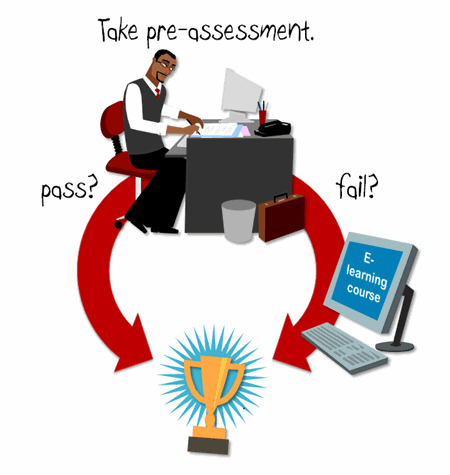
A simple linear course that allows the person to get the information as fast as possible is one of the best things you can do for the organization. To make it better, you may even have the learners test out so they can avoid wasting time.
Interactive elearning courses require more resources which is a challenge because most of us are working with limited resources. So when it comes time to prioritize your projects, don’t waste your limited resources on less meaningful projects. Keep them simple and you’ll have the resources available for those courses that require more.
Not All E-Learning is E-Learning
There are some elearning courses that are focused on improving performance and changing behavior. But there are also many courses that are information pieces. They exist to promote awareness and not necessarily change behavior.
For those types of courses, it doesn’t make sense to spend a lot of time on interactive content. The last thing you want is a decision-making interaction when all you need is a few screens of content.
Some would argue that if there’s no performance element, then it should just be a job aid or PDF. That’s a valid argument. But with the tools today, creating multimedia content doesn’t take much more time to pull together and distribute than a document.
I like this example from Hitachi. It’s a linear presentation of their social media policy. This could have been a simple website or PDF, but I think you’d agree that this is more interesting as a multimedia presentation. And they can always augment the presentation with interactions that let them practice applying the policy.
Click here to view the presentation. It looks great on the iPad, too.
Linear is just a form of navigation. What happens between the navigation can be very compelling and dynamic. It doesn’t have to be boring, bland, or full of bullet points. It just depends on how much effort you put into it.
Here are a few more examples of information modules that are mostly linear:
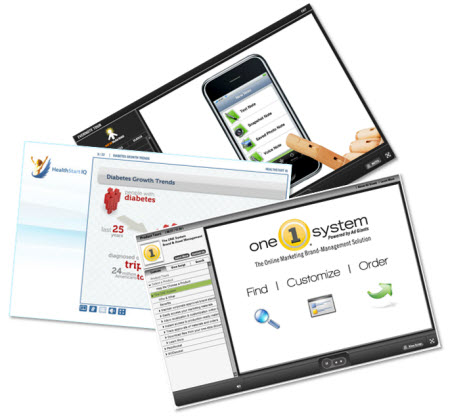
So there you have it. Linear is merely a form of navigation. This means what happens between the next buttons is up to you. It can be bland with a bunch of bullet points, or it can be interesting and meaningful. It just depends on what you choose to do.
Events
- Everyday. Check out the weekly training webinars to learn more about Rise, Storyline, and instructional design.
Free E-Learning Resources
 |
 |
 |
|
Want to learn more? Check out these articles and free resources in the community. |
Here’s a great job board for e-learning, instructional design, and training jobs |
Participate in the weekly e-learning challenges to sharpen your skills |
 |
 |
 |
|
Get your free PowerPoint templates and free graphics & stock images. |
Lots of cool e-learning examples to check out and find inspiration. |
Getting Started? This e-learning 101 series and the free e-books will help. |
21 responses to “3 Reasons Why Linear E-Learning May Be the Best Solution”
[…] I particularly enjoyed Tom Kuhlmann’s post this week, entitled ‘3 Reasons Why Linear e-Learning May Be The Best Solution‘. When you are creating a learning scaffold to assist learners in creating their journey […]
[…] The rest is here: 3 Reasons Why Linear E-Learning May Be the Best Solution » The Rapid eLearning Blog […]
Hi, Tom. Thanks for sharing! Do you know what authoring tool was used to develop the Hitachi course? It looks to me like Articulate or Brainshark.
Also, do you know how the animations were created and what file type was imported into the tool? You’ll have to forgive me, but I’m still trying to get current on the various ways animations can be made viewable on Apple devices.
Thanks!
What you describe in your post is being called “flip learning” in educational circles. It is taking the educational world by storm. Classroom teachers video tape a 10-minute lecture and then have discussion, labs, problem sets, writing time, etc. during class time. You offer great insight into how “flip learning” can inform, improve performance and change behavior in businesses and non-profits. Great work!
Likewise short linear how-to content makes sense in a performance support system. It is focused, fast and easy to create (by non ISD contributors) and delivers the type of user control needed to to quickly access only the information needed.
I really love your comments Tom, even though you are backed by a product/view of how people should learn. You’re assigned to sell a product, right? No worries! Acknowledge or not. But the issue of linear versus interactive is spot on. What the hell do we do? Do we have a framework for this?
Thanks for sharing! Mike’s presentation was a great example of how to really take advantage of Articulate and move beyond “the PowerPoint”. Any idea on how long it took him to create that segment? I’m always curious about development times on e-learning projects.
Hi Jennifer,
If my memory serves, I think the production time (video, PPT building, etc.) was about two crazy days worth of work. But I’d had the concept brewing for quite some time, so it was more just a matter of building it out.
Tom,
Good article about linear vs. performance type learning or other non-linear approaches. One other note is that novices in a content area need to learn in a more linear fashion than someone with more knowledge of the subject. So, when designing instruction, it is not only “awareness” vs. performance that might impact linear vs. another approach but the experience and knowledge level of the learners must also play a part.
In fact, research reported by Dr. Ruth Clark indicates that many of the instructional methods that are effective for novices (like linear navigation)either have no effect or, in some cases, depress the learning of learners with more experience. Learners with more experience do not require as linear an approach. Note, this is related to experience with the subject matter so you can have a 20 year veteran of the company not familiar with the new social media policy of the company and for her, for this topic, linear makes sense but for that same sales person with 20 years of experience, teaching a new sales model with a linear approach would not make sense.
Once again, good information, thanks.
Karl makes a great point. Many factors inform selections for delivery mediums as well as the formations and scaffolding afforded by the end product.
The amount of information (level of detail) is a serious consideration for the novice as is the amount of choice. Too much choice or LOD and the formation can go beyond diminishing returns into the territory of amplified losses for a novice. Too little affordance for deeper LOD and too little choice can do the same thing for an accomplished performer looking for small gains within a task area.
I’m waiting for the tool that supports dynamic / adaptive reconfiguration. For most tasks, I abhor linear spoon feeding when I’m in the audience. Sure would be nice for a package to give me the choice or reach a configuration based on how I answered a couple of questions.
[…] 3 Reasons Why Linear E-Learning May Be the Best Solution […]
[…] 3 Reasons Why Linear E-Learning May Be the Best Solution […]
[…] let’s keep in mind that click-and-read courses are not bad. In fact, there are many times where a linear course may be the best solution. But that should be something determined as part of the process of building the course and not a […]
Good Article!!Yes the bigger picture is what we can plan to offer to the organization and how best they can use it.
[…] elearning courses are linear and not very interactive. Sometimes a linear course is the right solution. However, often linear is the default solution because of a lack of resources or because the […]
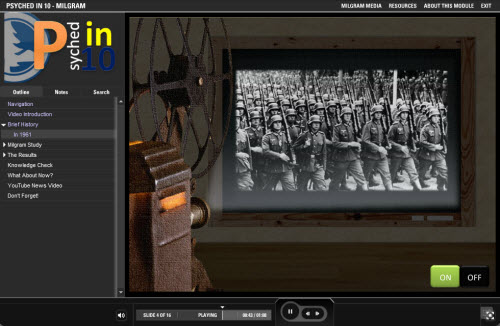
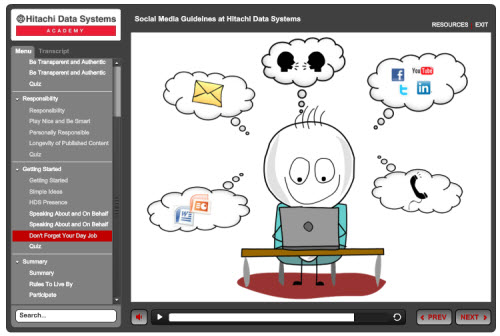


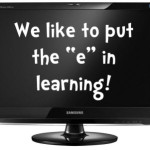






0
comments